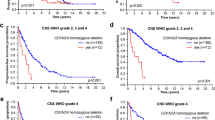Background:
Eppendorf electrode measurements of tumor oxygenation have defined an adverse effect of tumor hypoxia on prognosis after radiotherapy and other treatment modalities, in particular in head and neck and cervix carcinomas as well as soft tissue sarcomas. Recently, the immunohistochemical detection of proteins involved in the “hypoxic response” of tumor cells has been discussed as a method to estimate hypoxia in clinical tumor specimens.
Material and Methods:
This review focuses on clinical and experimental data, regarding prognostic impact and comparability with other methods of hypoxia detection, for three proteins suggested as endogenous markers of tumor hypoxia: hypoxia-inducible factor-1α(HIF-1α), carbonic anhydrase 9 (CA 9), and glucose transporter 1 (GLUT1).
Results:
None of the three potential hypoxia markers is exclusively hypoxia-specific, and in each case protein can be detected under normoxic conditions in vitro. HIF-1α responds rapidly to hypoxia but also to reoxygenation, making this marker quite unstable in the context of clinical sample collection. The perinecrotic labeling pattern typical of chronic hypoxia and a reasonable agreement with injectable hypoxia markers such as pimonidazole have most consistently been described for CA 9. All three markers showed correlation with Eppendorf electrode measurements of tumor oxygenation in carcinoma of the cervix. In nine of 13 reports, among them all three that refer to curative radiotherapy for head and neck cancer, HIF-1α overexpression was associated with poor outcome. CA 9 was an adverse prognostic factor in cervix, head and neck and lung cancer, but not in two other head and neck cancer reports. GLUT1 predicted for poor survival in colorectal, cervix and lung cancer.
Conclusion:
Endogenous markers have the potential to indicate therapeutically relevant levels of hypoxia within tumors. Clinical trials assessing a marker’s ability to predict a benefit from specific hypoxia-directed treatment (e. g., tirapazamine, “ARCON” concept) are necessary to define the potential of individual markers.
Hintergrund:
Eppendorf-Elektroden-Messungen der Tumoroxygenierung haben den ungünstigen Effekt der Tumorhypoxie auf die Prognose nach Strahlenbehandlung und anderen Therapieformen gesichert, insbesondere bei HNO- und Zervixkarzinomen sowie Weichteilsarkomen. Der immunhistochemische Nachweis von Proteinen, die an der sog. hypoxischen Antwort (Abbildung 1) beteiligt sind, wird derzeit als Methode zur Abschätzung der Hypoxie in klinischen Tumoren diskutiert.
Material und Methodik:
Diese Übersicht umfasst klinische und experimentelle Daten zum prognostischen Wert und zur Vergleichbarkeit mit anderen Methoden der Hypoxiemessung für drei potentielle endogene Hypoxiemarker, und zwar Hypoxia-inducible Factor-1α (HIF-1α), Carboanhydrase 9 (CA 9) und Glucose-Transporter 1 (GLUT1).
Ergebnisse:
Keiner der drei Marker ist ausschließlich hypoxiespezifisch, und unter normoxischen In-vitro-Bedingungen war jeweils Protein nachweisbar. HIF-1α reagiert schnell auf Hypoxie, aber auch auf Reoxygenierung, so dass die Stabilität dieses Markers im Rahmen einer routinemäßigen Probengewinnung problematisch ist. Eine perinekrotische Lokalisation und zufrieden stellende Übereinstimmung mit injizierbaren Hypoxiemarkern wie Pimonidazol wurden am übereinstimmendsten für CA 9 beschrieben. Alle drei Marker zeigten eine Korrelation mit Eppendorf-Elektroden-Messungen bei Zervixkarzinomen. In neun von 13 Arbeiten, darunter alle drei zur primären Radiotherapie von HNO-Tumoren, war die HIF-1α-Überexpression mit einer ungünstigen Prognose assoziiert (Tabelle 2). CA 9 war ein negativer Prognosefaktor für Zervixkarzinome, HNO-Tumoren und Bronchialkarzinome, in zwei weiteren HNO-Serien aber nicht mit der Prognose korreliert (Tabelle 3). GLUT1 war bei kolorektalen, Zervix- und Bronchialkarzinomen ein Indikator ungünstiger Überlebensraten.
Schlussfolgerung:
Endogene Marker können therapeutisch relevante Hypoxie in Tumoren detektieren. Um den Nutzen einzelner Marker zu beurteilen, sind klinische Studien erforderlich, in denen die Fähigkeit eines Hypoxiemarkers, den Vorteil einer hypoxievermittelten Therapie (z. B. Tirapazamin, „ARCON“-Schema) vorherzusagen, untersucht wird.
Similar content being viewed by others
Author information
Authors and Affiliations
Corresponding author
Rights and permissions
About this article
Cite this article
Vordermark, D., Brown, J.M. Endogenous Markers of Tumor Hypoxia. Strahlenther Onkol 179, 801–811 (2003). https://doi.org/10.1007/s00066-003-1150-9
Received:
Accepted:
Issue Date:
DOI: https://doi.org/10.1007/s00066-003-1150-9




